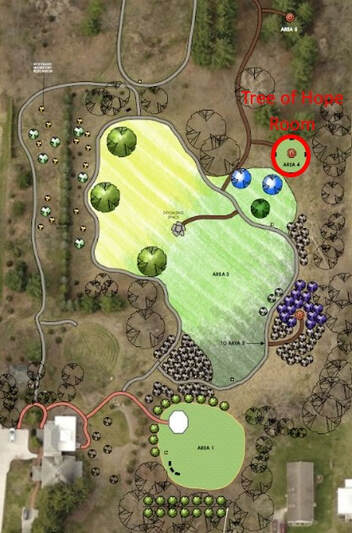
The Tree of Hope is a place of prayer, rooted in the Celtic Christian tradition. For many centuries in Scotland and Ireland, pilgrims visited sacred wells and tied strips of cloth on a tree adjacent to the well. Often, these cloth rags represented physical ailments from which the pilgrim was seeking healing. These trees were called “Clootie Trees” because in Scots a Cloot is a rag or a strip of cloth. As the strips weathered and blew away, so too the pilgrims prayed that their sickness would fade and go away. There are no natural wells on the Pathways campus, so we decided to create our own version of the Clootie Tree by commissioning The Tree of Hope from Goshen artist and sculptor Sunday Mahaja.

We invite you to offer your prayers by tying a rag strip to our metal Tree of Hope. This might be to honor a loss, or to pray for healing for yourself or a loved one. You might want to offer a prayer for a situation in your life, or in the world.
The intent is that the strips will weather, fade and disintegrate. If you bring your own strip, please make sure it is a natural fiber such as cotton or wool so that it biodegrades without littering the landscape.
The intent is that the strips will weather, fade and disintegrate. If you bring your own strip, please make sure it is a natural fiber such as cotton or wool so that it biodegrades without littering the landscape.
Proudly powered by Weebly

